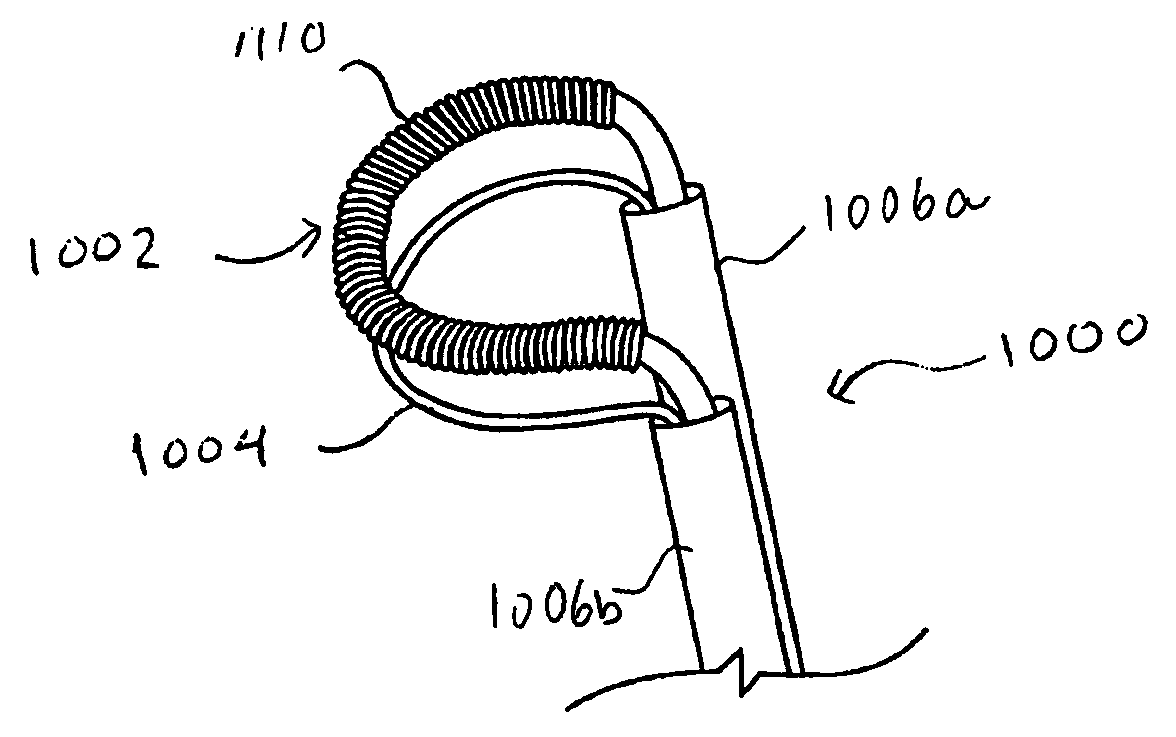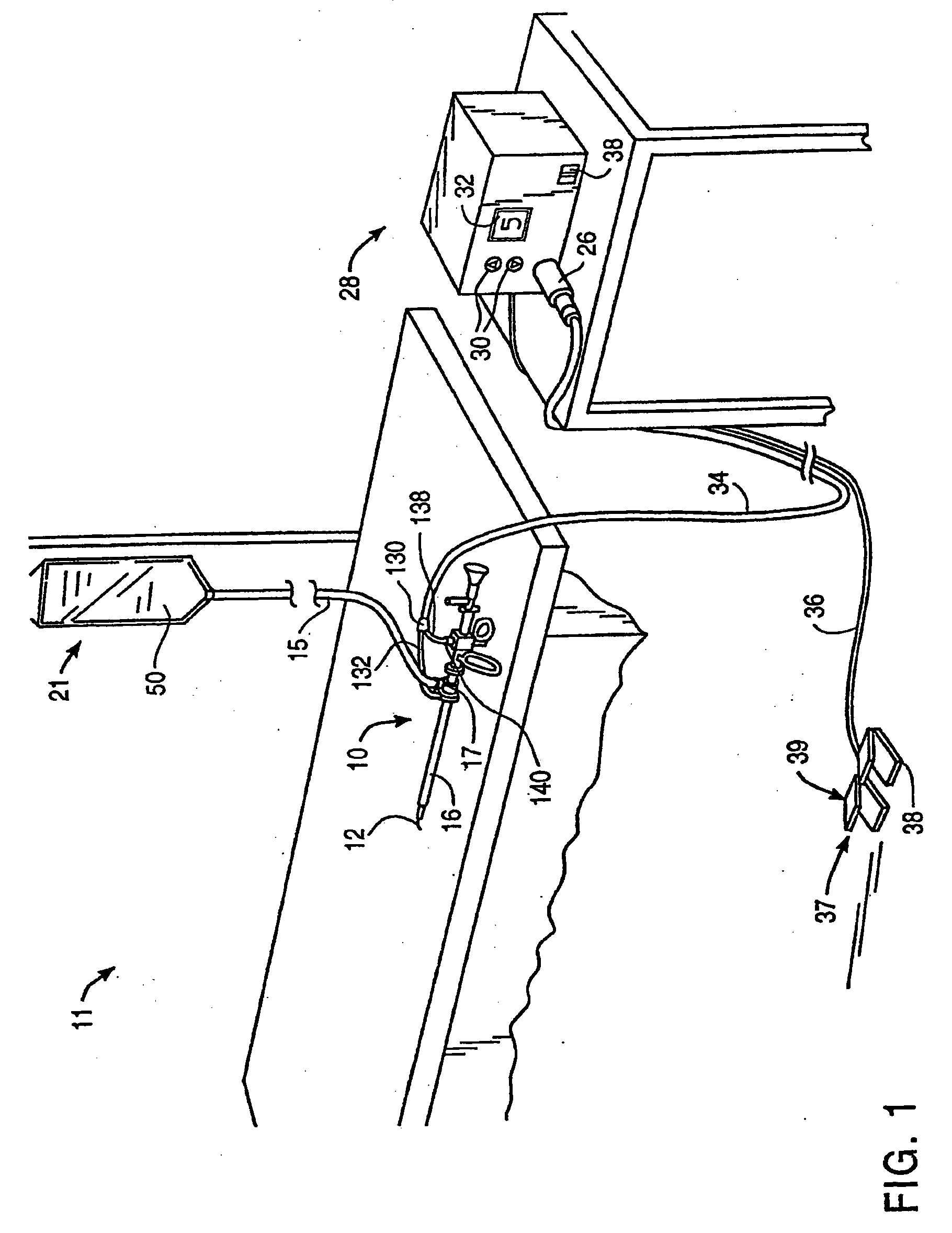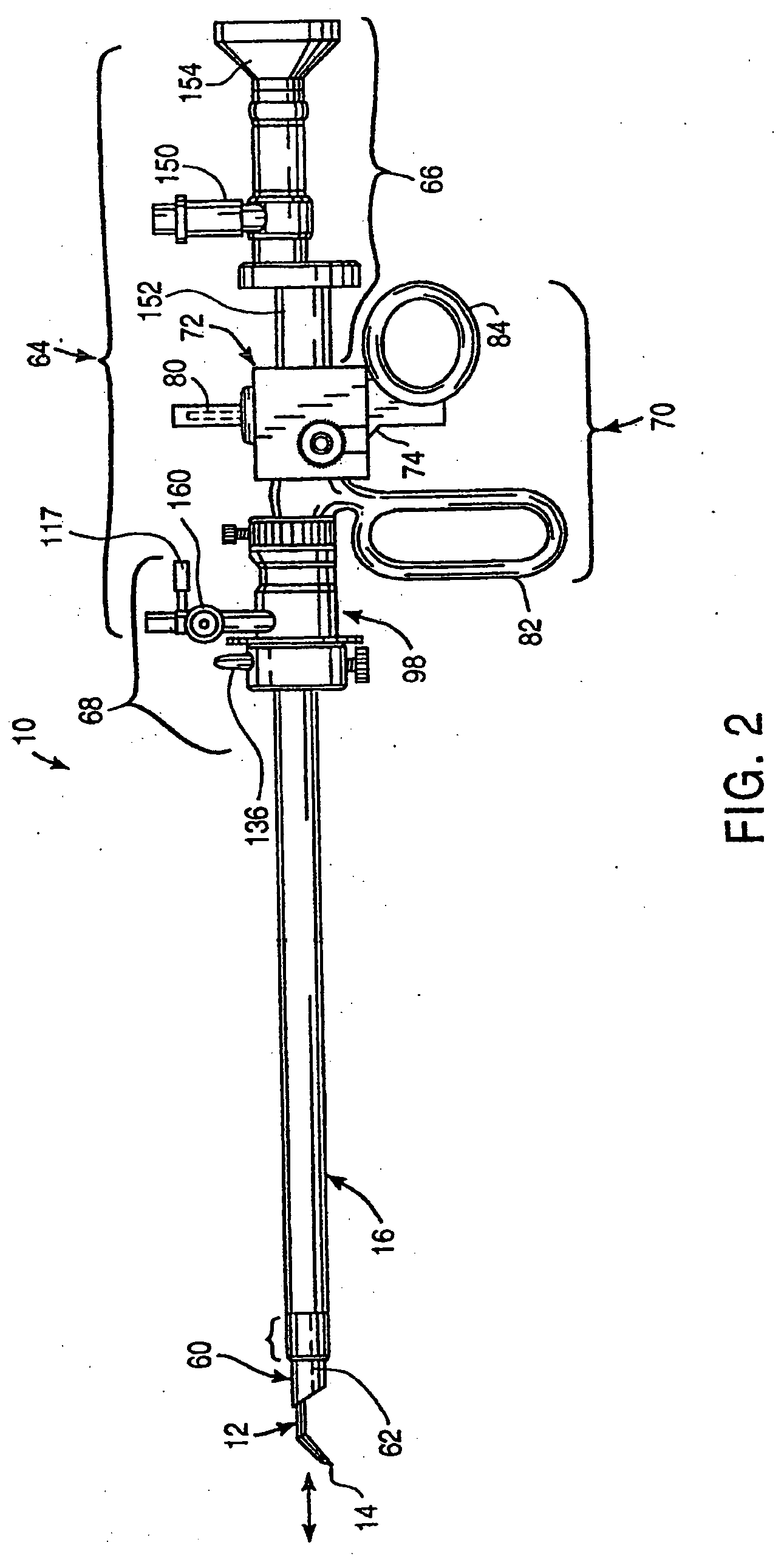Apparatus and methods for electrosurgical ablation and resection of target tissue
a target tissue and electrosurgical technology, applied in the field of electrosurgical ablation and target tissue resection, can solve the problems of inability to define the path, damage to or destroy the tissue along the path and surrounding such pathways, and suffer from electrosurgical devices and procedures, etc., and achieve the effect of little or no damag
- Summary
- Abstract
- Description
- Claims
- Application Information
AI Technical Summary
Benefits of technology
Problems solved by technology
Method used
Image
Examples
Embodiment Construction
[0072] The present invention provides a system and method for selectively applying electrical energy to a target location within or on a patient's body, such as solid tissue or the like, including procedures within confined spaces such as the spaces around the articular cartilage between the femur and tibia and spaces between adjacent vertebrae in the patient's spine, and procedures that involve resection of relatively larger pieces of tissue. For convenience, the remaining disclosure will be directed primarily to the resection of prostate tissue, and the cutting, shaping or ablation of meniscal tissue located adjacent articular cartilage and soft tissue covering vertebrae. However, it will be appreciated that the system and method can be applied equally well to procedures involving other tissues of the body, as well as to other procedures including open surgery, laparoscopic surgery, thoracoscopic surgery, and other endoscopic surgical procedures. Examples of such procedures includ...
PUM
 Login to View More
Login to View More Abstract
Description
Claims
Application Information
 Login to View More
Login to View More - R&D
- Intellectual Property
- Life Sciences
- Materials
- Tech Scout
- Unparalleled Data Quality
- Higher Quality Content
- 60% Fewer Hallucinations
Browse by: Latest US Patents, China's latest patents, Technical Efficacy Thesaurus, Application Domain, Technology Topic, Popular Technical Reports.
© 2025 PatSnap. All rights reserved.Legal|Privacy policy|Modern Slavery Act Transparency Statement|Sitemap|About US| Contact US: help@patsnap.com



